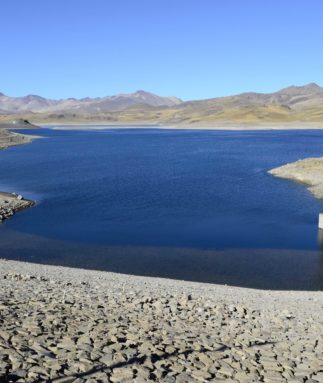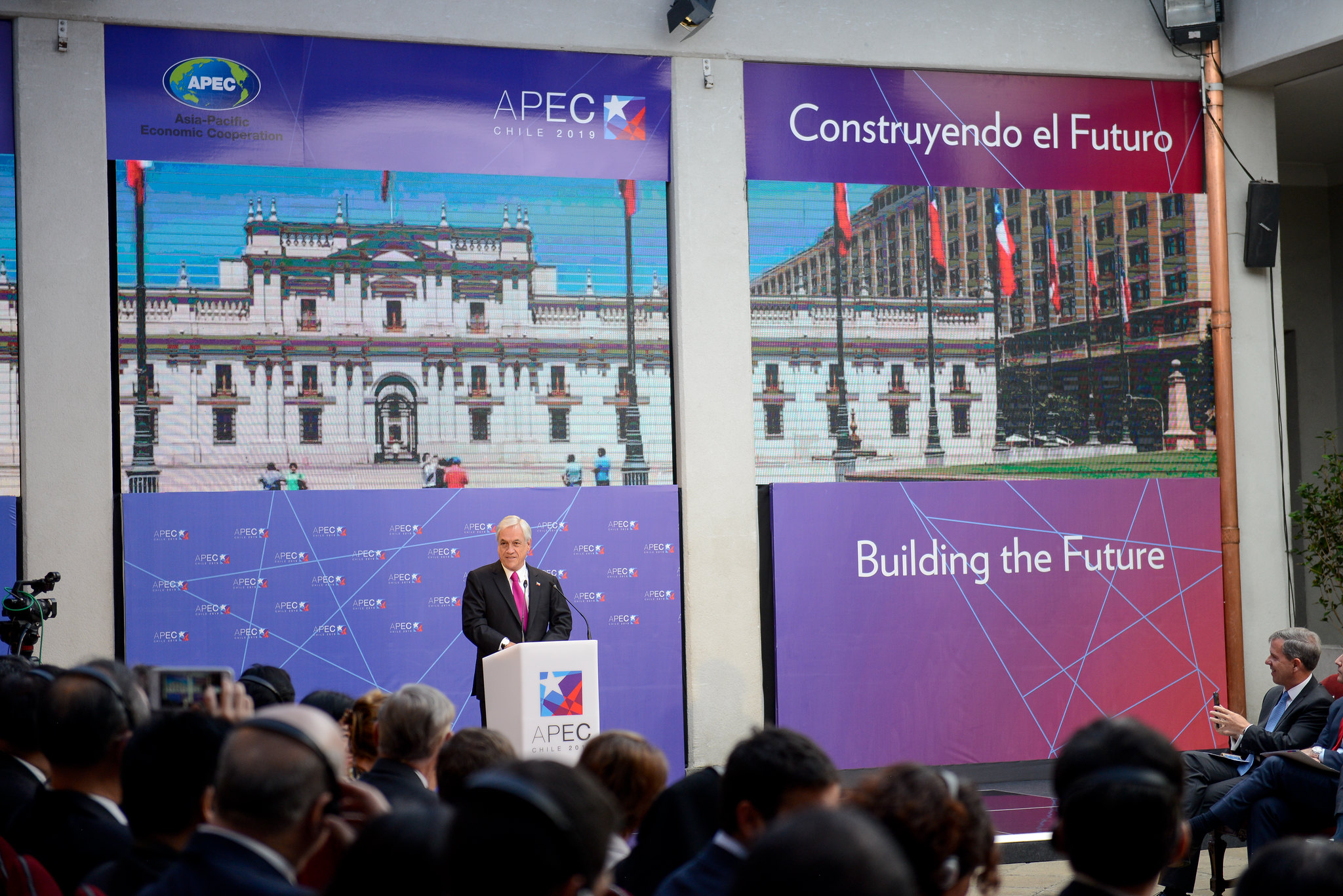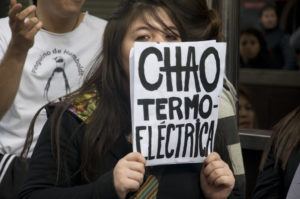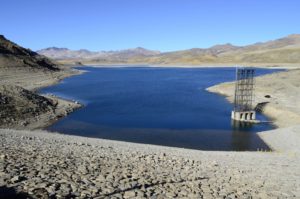Editor’s note: This is the third article in a series profiling Chile and its climate change challenges in advance of COP25 climate talks in Santiago in December.
With spotlights trained on the opening of a small tunnel in the Atacama Desert floor, Florencio Antonio Avalos Silva finally resurfaced, squeezed inside a metal capsule. In a daring rescue in October 2010, watched by an estimated one billion TV viewers across the globe, he was among 33 Chilean miners to escape after being trapped in a copper-gold mine 2,300 feet underground for two months.

In 2019, the world is looking to Chile to pull off another remarkable feat. Chile will host the 21 leaders of the Pacific Rim for the APEC Summit in November and then UN climate negotiations (known as COP25) less than a month later.
Around 20,000 visitors attending the summits will see first hand how the battle to build a low emission economy is unfolding as one of the world’s largest electric buses fleets crisscrosses Santiago, a city grappling with highly congested streets and deadly air pollution.
As the incoming COP25 president, Chile is under pressure to demonstrate its willingness to reduce its emissions by 45% by 2030 from 2010 levels and achieve net zero emissions by 2050, in line with the Paris Agreement to pursue efforts to limit warming to 1.5C.
At the APEC Summit, Chile will focus on sustainable and inclusive growth, women and the digital economy. For COP25, Chile is encouraging countries to offer bolder emission reduction pledges and build support for protecting Antarctica, oceans, forests and biodiversity, while promoting electric mobility, renewable energy and the circular economy.
Chilean president Sebastián Piñera appears committed to making COP25 a success. In April, he said the conference will be a great opportunity for all countries to acknowledge that more ambition is urgently required to confront climate change.
The government has created a presidential advisory committee to support the COP preparations with two former presidents, ex-ministers and representatives from congress, business, civil society and academia. The public also seems to be on board: A recent survey shows that 69% of Chileans think it’s very important and 68% believe that it will have a positive effect on the country.
Chile is one of the best placed countries in the world to lead by example
In a promising sign, Chile announced it will aim to become carbon neutral by 2050. So far, the only Latin American country with an existing plan is Costa Rica. Chile also signed a statement by the High Ambition Coalition, pledging to present a revised national climate plan aligned with the 1.5C goal by 2020.
This poses a massive challenge given Chile’s emission reduction targets for 2030 are considered highly insufficient by monitoring group Climate Action Tracker. Civil society groups are also vexed that the government has thus far failed to sign the Escazú Agreement, the first binding regional agreement to protect environmental defenders.
Encouraging some countries to put forward more ambitious targets will be tough. Two of Chile’s regional neighbours, Brazil and Mexico, appear more concerned with gutting protections in the Amazon and increasing fossil fuel production respectively, than taking on greater commitments.
Despite these difficulties, Chile is one of the best placed countries in the world to lead by example which can hopefully serve to encourage others to follow it.
A focus on the energy sector, which makes up 78% of Chile’s emissions due primarily to the consumption of fossil fuels for power generation and transport, is a top priority. Chile has made strong progress on renewable energy and is trying to repeat a similar feat with the deployment of electric vehicles.
Did you know…
In 2018, Chile was ranked first among developing countries for its ability to attract clean energy investment
In 2018, Chile was ranked first among developing countries by the survey ClimateScope for its ability to attract clean energy investment. In a promising sign, Chile closed 2018 with a 20.8% share of renewable energy in the power mix, up from 17.9% the year before.
To build on this progress, on June 4 the Chilean government and the country’s four largest power generation companies signed a voluntary agreement to phase out all coal power generation by 2040, which currently represents around 40% of electricity generation.
Eight of the oldest plants, with an installed capacity of 1,047 MW, will be retired by 2024. The 8 plants will remain in a state of “operational reserve” for a maximum of 5 years in case of an emergency.
To complicate matters, this month the French energy company, Engie, started commercial operations of a new 375 MW unit at the Mejillones coal power plant. Though construction began in 2014, the new unit demonstrates that, given the long shelf life of infrastructure projects, phasing out fossil fuels is highly complex and needs to start as early as possible. Ideally, new fossil fuel projects should be avoided entirely.
How Chile can go green
While the slow shift away from coal is welcome, reducing the significant emissions created by heating and industry should be a priority. Chilean imports of natural gas from Argentina are also set to rise creating another problem for emission reductions. But beyond this, Chile can accelerate the transition to a cleaner economy in a number of ways.
First, Chile should bring forward the coal-phase out date to 2030. Chile Sustentable, an environmental organisation, says that closing all 28 coal power plants with a total capacity of 5.540 MW by 2030 is achievable. The 2030 date is also more in tune with the level of ambition called for by the Paris Agreement, especially for OECD members such as Chile.
COP25 can be a catalyst to advance Chile’s green legislative agenda
Chile is also aiming to transition to a 100% electric public transport fleet and a private vehicle fleet made up of 40% electric vehicles by 2050. Santiago now has 203 electric buses with plans to reach 1,500 by 2025. Securing financing from multilateral development banks and the private sector for more electric buses, encouraging more people to use public transport, and implementing stricter fuel-efficiency and emission standards for heavy and light vehicles is essential.
Second, COP25 can be a catalyst to advance Chile’s green legislative agenda. This year, the government will present a draft climate change bill. A key litmus test will be whether the Piñera administration and lawmakers put issues of environmental and climate justice at the center of the discussion given the severity of Chile’s vulnerability to forest fires and other climate impacts; and clashes over the negative social and environmental impacts of coal power plants and mining in “sacrifice zones”.
Third, Chile can explicitly connect the agendas of the APEC Summit and COP25 to make a bold statement that to achieve sustainable development, the issues of trade, investment and climate action must be addressed together. The timing is ideal given Chile recently helped create the Coalition of Finance Ministers for Climate Action, which endorsed a set of principles to support finance ministers of 30 countries share best practices on low-carbon and climate-resilient growth.
With global demand likely to surge for Chile’s vast reserves of copper and lithium to satisfy the shift to electrical vehicles and renewable energy, it could reap the benefits if it can make progress on aligning discussions at the APEC Summit on trade and investment policies with the Paris Agreement.
Chile’s agricultural sector, which is the leading supplier of fresh fruits to China, is also especially vulnerable to climate impacts such as droughts and floods, and will need greater public and private support to build resilience and adapt.
US$5.3 billion
The amount Chile would save by investing in a 100% renewable energy power grid by 2050
With confidence growing that climate action complements economic growth, an announcement by the Chilean government of a new climate action plan for 2030 aligned with the 1.5C goal could send an even stronger message to the private sector, which could help boost low carbon investment in the short term.
The benefits appear well worth it. Analysis suggests that aiming for a 100% renewable energy power grid by 2050 could avoid Chile spending US$5.3 billion a year on fossil fuels, create 11,000 green jobs and prevent 1,500 premature deaths from air pollution.
President Piñera says that Chile is strongly committed to multilateralism. As the threads of the liberal world order become frayed by President Trump’s hostility towards global agreements and international conflicts, we need countries willing to reinforce the fabric of global institutions and step up their climate commitments.
To pull off a successful APEC Summit and COP25, Chile could announce a new emission reduction target for 2030 aligned with the 1.5C goal. This would not only be good for Chile but also the rest of the world, which may well decide to follow it.








